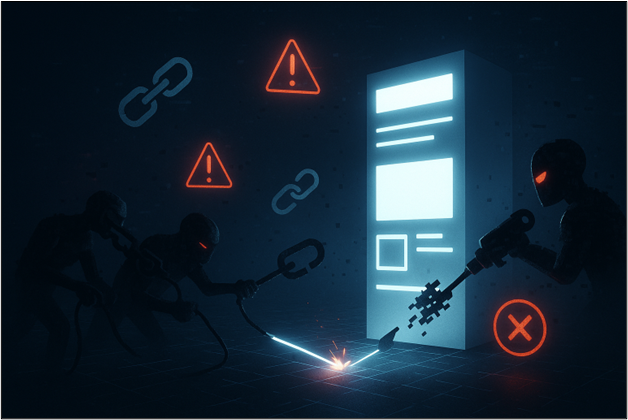What Every Marketer Should Know About Negative SEO

Search engine optimization isn’t always about getting ahead. Sometimes, it’s about staying out of someone else’s crosshairs. Negative SEO tactics can quietly destroy your rankings while you’re busy optimizing your site with best practices. If that sounds sinister, that’s because it is. But pretending it doesn’t happen is negligence.
What is Negative SEO?

Negative SEO is when someone deliberately attempts to sabotage another website’s search engine performance. It’s not a myth. It’s not a conspiracy theory. It’s old-fashioned sabotage wearing algorithmic camouflage. While it’s not every marketer’s daily problem, the impact can be sharp, sneaky, and expensive to undo.
These attacks may come in several shapes such as link spam, fake reviews, content scraping, forced crawling, or even hacking. Sometimes it’s a competitor, sometimes a black-hat agency trying to stir up chaos. Either way, it’s best to stay a step ahead.
Common Tricks Used in Negative SEO
Here’s what you might be up against:
- Toxic Backlinks: Hundreds of thousands of junky backlinks from irrelevant or malicious sites are pointed at your site. This messes with your link profile and can tank your credibility with Google.
- Content Scraping: Your original content is stolen and published on other sites faster than Google can crawl yours. If the duplicates get indexed fast, you look like a copycat.
- Fake Reviews: A sudden wave of one-star reviews might not be your fault. But the algorithm doesn’t care.
- Website Crawling Overload: Automated bots repeatedly hit your site, straining your server and slowing things down, making you look unreliable.
- Hacking: Inserting malicious code, redirecting traffic, or adding spammy pages you didn’t even know existed. Not fun.
Signs That Something’s Off
SEO fluctuations happen, but when rankings drop like a brick and your backlink profile looks like a junkyard, there’s more going on. So always be on the lookout for:
- Unusual traffic drops with no clear seasonal reason
- Sudden surges in low-quality backlinks
- Duplicate versions of your content showing up in search
- A spike in crawl errors
- Strange pages or redirects appearing in your sitemap
These aren’t always signs of foul play, but ignoring them won’t fix anything either.
What You Can Do About It
You’re not powerless. Here’s how to fight back:
- Monitor Your Backlinks: Use tools like Ahrefs, SEMrush, or Search Console to keep an eye on new links. Flag the suspicious ones early.
- Disavow Wisely: Google’s disavow tool still works. Submit a file with the toxic links you don’t want associated with your site.
- Keep Content Indexed First: Publish regularly and ensure your content is crawled quickly. Internal linking and clean sitemaps help.
- Secure Your Site: Use strong passwords, regular software updates, and keep your plugins in check.
- Track Reviews: If you get hit with fake reviews, report them as spam or abuse through the relevant platform. Fast action helps.
Should You Panic? Not Really.
Negative SEO isn’t lurking around every corner, but it does exist. Most marketers won’t face it daily, but awareness beats ignorance. You can’t control others’ tactics, but you can control how prepared you are.
Be vigilant, stay updated, and treat your site like the asset it is. If something smells off, don’t wait for an algorithm update to spell it out for you.







